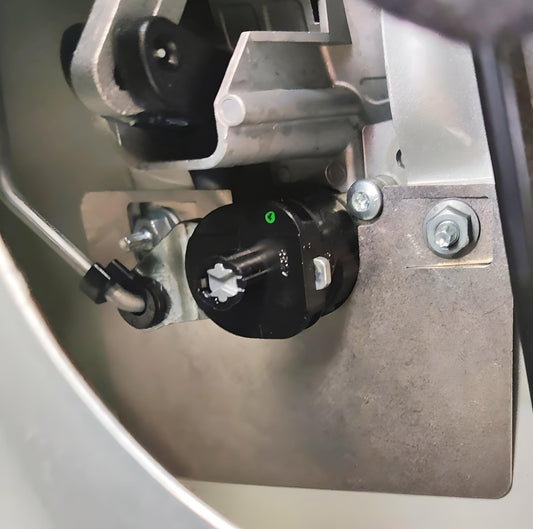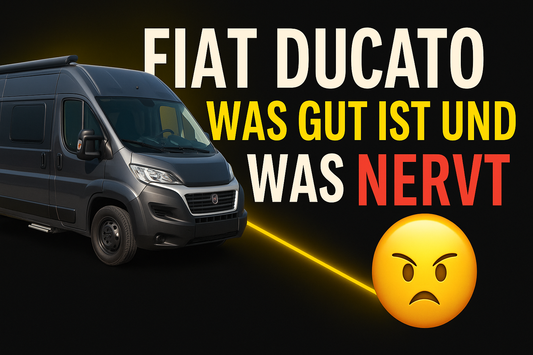Camper conversion Peugeot Boxer - Dismantling and floor
Once the decision for the Peugeot Boxer L3H2 had been made, the first major step was to be taken: dismantling. Before anything new can go in, the old has to come out - consistently and thoroughly. In my case, this meant dismantling the partition wall, removing the shelving and taking out the floor so that it could then be rebuilt in a slim and stable manner. Here I show you how I proceeded, what decisions I made and what I would do slightly differently next time.
Removing the partition wall and shelf
The Boxer arrived as a classic commercial vehicle: a shelf was installed in the load compartment, and a solid partition wall separated the cab and load area. The shelving could be removed without any major surprises. The partition wall was a different story: heavy, stable and firmly bolted. Like many others, I first tried to sell it on - without success. In the end, it ended up in the garbage tip. That's not nice, but it shows that not every part can be recycled. However, I still got 50€ for the shelf made from old formwork panels.

Driving noise without a partition
Something that is often underestimated: without a partition, the van is extremely loud. You are suddenly sitting in a resonance chamber made of bare sheet metal. Even short distances are unpleasant, longer journeys are hardly conceivable. As a makeshift solution, I stretched a thick blanket behind the seats and also covered the wheel arches with blankets. This made it possible to drive the vehicle for hundreds of kilometers. At this point at the latest, it was clear to me that well thought-out noise and heat insulation is not a luxury, but the basis for driving comfort. (I will deal with the wall/ceiling insulation in a separate article).
Remove, clean and prepare the floor
There was already a robust Sortimo plywood floor with a plastic coating in the vehicle. I removed it, cleaned it thoroughly and prepared it for reinstallation. This not only saves money, but also has two other advantages: Firstly, the panel fits the floor geometry perfectly ex works. Secondly, I was able to retain the original attachment points and use them later for lashing straps. This detail proved to be extremely helpful in practice - be it when fixing components during removal or when securing loads.
XPS panels as a slim substructure
I laid 2 cm thick XPS boards under the Sortimo floor. Many self-builders use Armaflex or a slatted construction at this point. Both work - I opted for XPS for several reasons:
- Continuous insulation layer: unlike a batten construction, the insulation is not interrupted by wooden battens. This reduces thermal bridges and ensures a homogeneous, quiet feeling when walking.
- Quick installation: cut the panels to size, glue them in place at specific points and you're done. No alignment and screwing of battens.
- Weight advantage: XPS is significantly lighter than a classic wooden substructure - every kilo saved pays off in terms of payload and ride comfort.
- Flat construction height: 2 cm is not very bulky. This was important to me because we wanted to integrate a third bed later and every centimeter of internal height counts.

I glued the XPS panels in places to prevent them from slipping. Full-surface bonding was not necessary because we screwed the floor to the original fixing plates. The cleaned Sortimo floor was then returned. The result: a stable, lightweight and sufficiently insulated floor structure that is still doing its job unobtrusively today.
Small weak point at the side entrance - how I would do it today
There is one area that has proven to be optimizable in everyday life: the side entrance. Here, the floor is subjected to a lot of punctual load and you notice that XPS compresses a little there. If I were to build the floor again, I would use wooden slats in this area (only there, not over the entire surface) to transfer the load cleanly into the body. In all other areas, the system shows no yielding; the structure is absolutely solid.
Alternative: Floor panel for Heinrich motorhomes
A tip if there is no Sortimo floor in the vehicle or if you simply want to save yourself some work: Wohnmobile Heinrich offers a floor panel that is installed and foamed in directly on site. This is a very simple, inexpensive and quick solution, which I would have opted for if I hadn't already had the Sortimo panel.
Transparency note: I have no cooperation with this company. The advice is purely intended as a practical tip for others who are looking for an uncomplicated flooring solution.
Conclusion: Deconstruction & floor
Dismantling is the basis for everything else. Only when the partition wall, shelving and old floor are out does the space emerge in which the extension can be sensibly planned and implemented. The combination of XPS (2 cm) and the reused Sortimo board proved to be ideal for my floor construction: light, quick, fully insulated and stable. I would only reinforce the side entrance with a wooden strip in future.
- Remove the partition wall early - but expect a lot more driving noise; temporarily insulate with blankets.
- Reuse Sortimo flooring (if available): perfect fit, saves money and time.
- XPS instead of battens: continuous insulation without thermal bridges, quick installation, significantly less weight.
- Spot bonding is sufficient for XPS - full-surface bonding is usually not necessary.
- Reinforce side access: locally underlay with wooden battens to avoid pressure points.
- Alternative without Sortimo: foamed-in floor panel on site at Wohnmobile Heinrich - simple, cheap, fast (no sponsoring).
- Retain theoriginal attachment points and continue to use them as lashing points.
The next article in the series is about the seatbelt support and seats - why I opted for a solution from Reikon, how the installation went at Wohnmobile Heinrich in Zeilingen and why I took the upholstery and cladding with me to save time.





